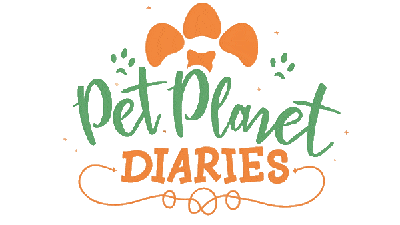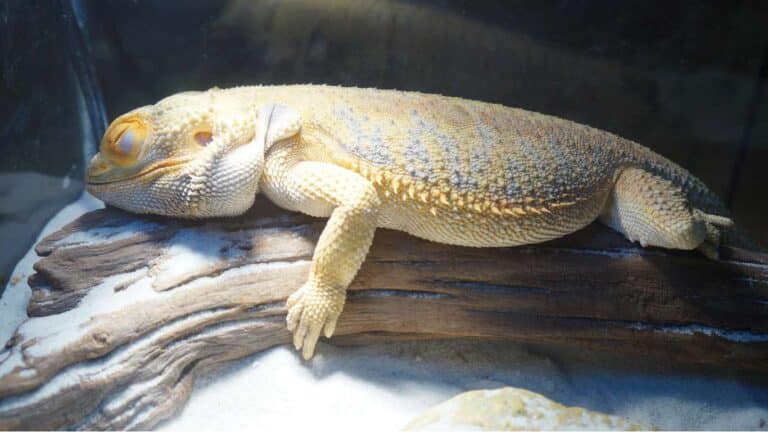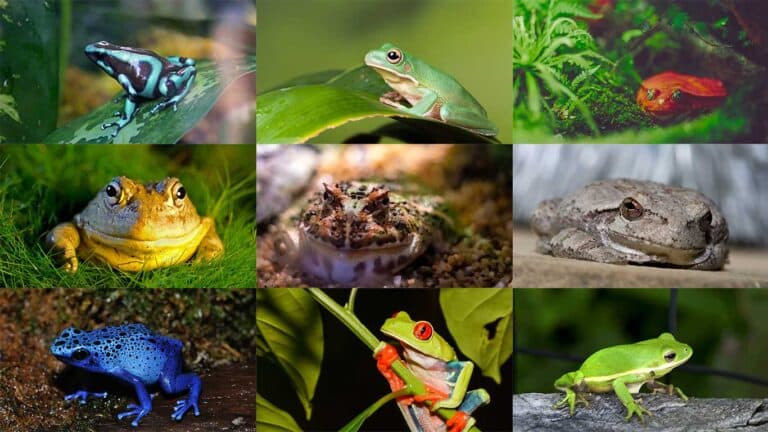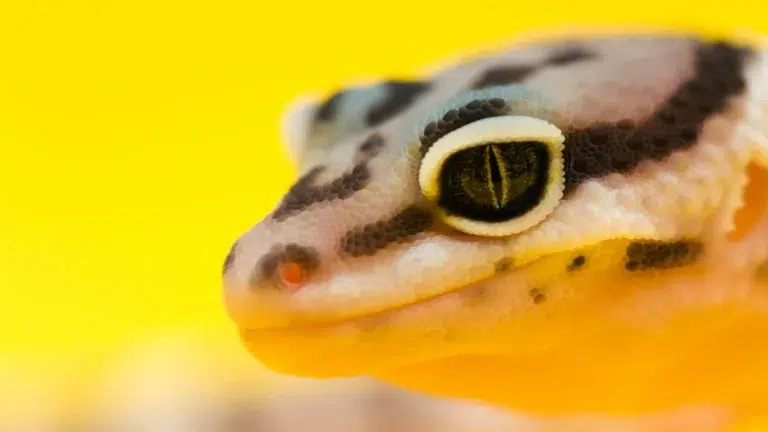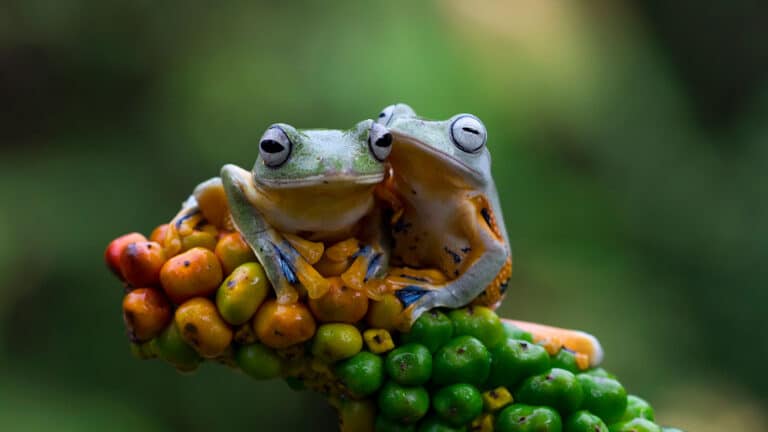Are you a proud tortoise owner? If so, you must be familiar with the importance of providing your pet with a well-balanced diet. And for safe feeding tips, you should know: Can a tortoise eat celery?
Tortoises are mostly herbivores. So, you may wonder if it’s safe to give them veggies like celery.
In this article, we’ll discuss if tortoises can eat celery and share safe feeding tips for them.
Understanding Tortoise Dietary Needs
Tortoises thrive with specific dietary needs. Different tortoises eat different things. Some only eat plants, while others eat both plants and insects. They also need calcium in their diet. To take great care of your tortoise, it’s important to know what they eat and what nutrients they need.
Tortoise dietary needs vary based on their species and habitat. The Russian and sulcata tortoises mostly eat plants, veggies, and leafy greens. These tortoises rely on fiber-rich foods to maintain proper digestion and general health.
Some types of tortoises, such as the red-footed and yellow-footed ones, eat both plants and meat. Besides plant matter, they also consume insects, snails, and other small prey. These tortoises need a mix of plants and proteins to stay healthy.
In both cases, calcium is a main component of a tortoise’s diet. Calcium is crucial for shell development and bone health. You can provide it through sources such as cuttlebone and calcium supplements. Also, calcium-rich greens like kale and collard greens are good options.
Understanding the dietary needs of your tortoise is essential. Meeting these needs is vital for their long-term health and well-being. Giving your tortoise a mix of foods that match what they’d eat in the wild will help them grow well and stay healthy.
Can a Tortoise Eat Celery: The Nutritional Breakdown
Before giving celery to your tortoise, know what’s in it. Celery is a healthy veggie with lots of vitamins and minerals that are good for your tortoise. It’s crucial to know about certain things like its oxalate and water content. This helps ensure your tortoise stays healthy.
Celery’s General Nutrient Content
Celery is a healthy veggie that gives your tortoise important vitamins and minerals. It is rich in vitamin K, which plays a vital role in blood clotting and bone health. It also contains vitamin A, which is necessary for good vision and a healthy immune system. Additionally, celery offers potassium, manganese, folate, and dietary fiber, contributing to overall well-being.
Oxalates and Tortoise Health
While celery is nutritious, remember to think about its oxalate level. Oxalates are naturally occurring compounds found in many foods, including celery. Oxalates can cause problems if tortoises eat a lot of them. They might mess up calcium absorption and even lead to kidney stones. It’s crucial to give celery to your tortoise in moderation. This helps reduce the potential negative effects of oxalates.
Water Content and Hydration
Another important aspect of celery is its high water content. This can help tortoises stay hydrated and function well. Foods with lots of water, such as celery, can keep your tortoise hydrated overall. Remember to give them a balanced diet with many other water-rich foods. Also check their hydration levels.
| Nutrient | Amount per 100g |
|---|---|
| Energy | 16 kcal |
| Protein | 0.7g |
| Fat | 0.2g |
| Carbohydrate | 3g |
| Fiber | 1.6g |
| Vitamin K | 41.9µg |
| Vitamin A | 449IU |
| Potassium | 260mg |
| Manganese | 0.1mg |
Safe Feeding Practices for Tortoises
When feeding your tortoise, be safe and introduce new foods slowly. Watch how they react. Think about controlling portions and how often you feed them for a balanced diet.
Introducing New Foods to a Tortoise’s Diet
When introducing new foods to your tortoise, it’s best to do so gradually. This allows their digestive system to adjust and helps avoid potential digestive issues. To introduce celery to your tortoise’s diet, give them a small amount first. See how they react. If they tolerate it well, you can increase the portion gradually over time.
Portion Control and Frequency
Portion control is important for ensuring your tortoise receives a balanced diet. Usually, veggies like celery should be a big part of their diet, but it’s good to give them other veggies too. Ask a vet or reptile expert to find out how much your tortoise should eat based on their type.
Feeding frequency also plays a role in your tortoise’s diet. While it depends on the species, in general, most tortoises should be fed daily or every other day. Monitor and adjust the feeding schedule based on their age, size, and activity level. This is important for their health.
Following safe feeding practices helps ensure your tortoise’s diet is balanced. It also helps meet their needs. Introduce new foods gradually. Control portions and feeding frequency. This promotes their health and well-being.
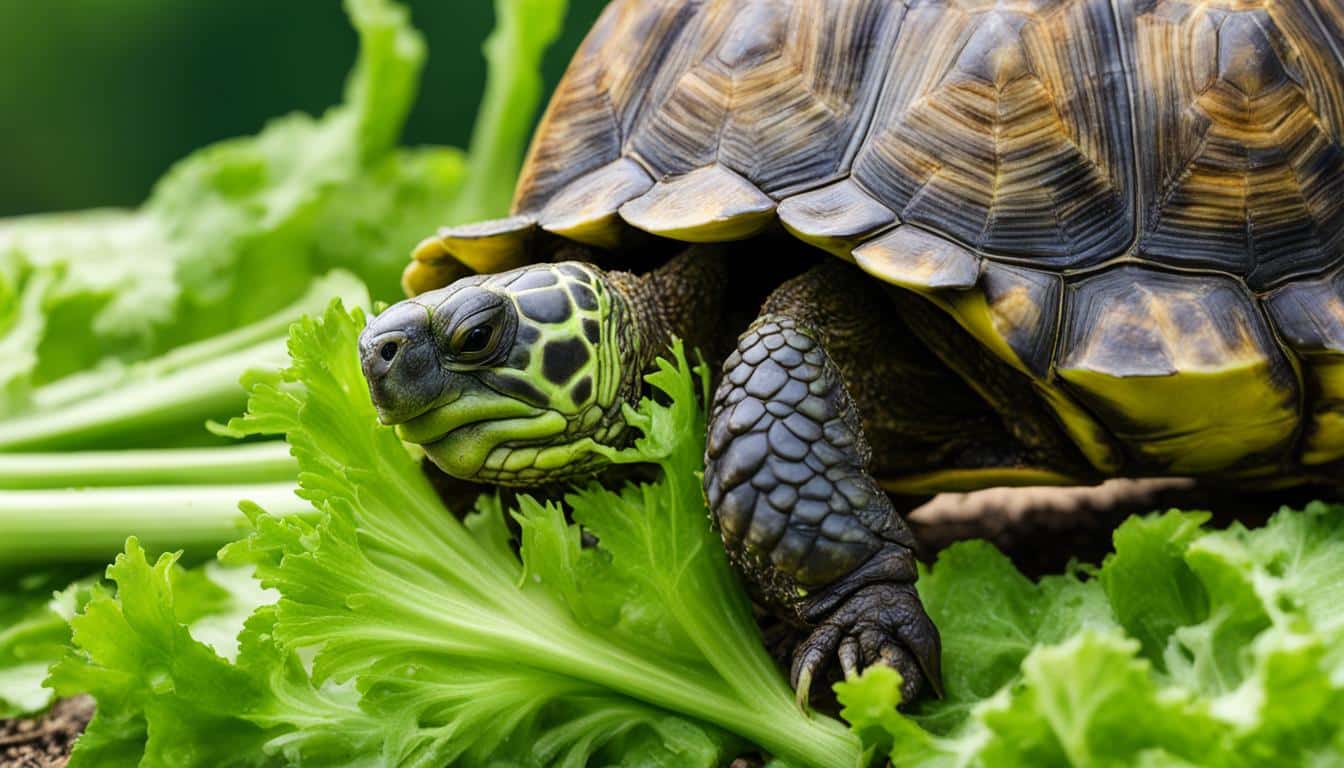
Preparation Tips for Feeding Celery to Tortoises
To safely feed celery to your tortoise, it is important to properly prepare it. Follow these preparation tips to ensure the health and well-being of your pet:
- Wash thoroughly: Before feeding celery to your tortoise, wash it thoroughly. This helps remove any dirt or chemicals that may be present. This will help ensure that your tortoise is not exposed to any harmful substances.
- Boil for softening: Boiling celery can help soften it. This makes it easier for tortoises to chew and digest. Gently boil the celery until it becomes tender, but not mushy. This will make it more palatable and reduce the risk of choking.
- Chop into small pieces: Cut the celery into small, bite-sized pieces. This makes it easier for your tortoise to eat. Avoid large, hard pieces that may pose a choking hazard. Provide appropriately-sized portions for your tortoise. This ensures safe consumption of the celery.
By preparing food safely, you can make feeding your tortoise better and safer. Remember to watch your tortoise while they eat. If you’re worried about their diet or health, talk to a vet.
Common Health Concerns When Feeding Celery
Giving celery to tortoises can be risky because they might choke. It is important to properly chop the celery to prevent these hazards. Some tortoises might be allergic to celery. Watch for signs of allergies. This is important for their well-being.
Choking Hazards and Proper Chopping Techniques
Celery can make tortoises choke if not cut right. To be safe, chop it into small pieces they can easily eat. Chop the celery nicely to prevent choking hazards and ensure safe feeding practices.
To chop celery for your tortoise:
- Wash the celery thoroughly to remove any dirt or chemicals.
- Cut off the ends and remove any tough or fibrous parts.
- Slice the celery stalks into thin, small pieces.
- Keep chopping the slices into smaller pieces, making sure they’re easy for the tortoise to eat.
By chopping celery properly, you can make it safer for your tortoise to eat and lessen the risk of choking.
Monitoring for Allergic Reactions
Celery is usually fine for tortoises, but some might be allergic. Keep an eye on your tortoise for any signs of allergies when you give them celery for the first time. Common signs of allergies in tortoises may include:
- Swelling or redness around the mouth or face
- Excessive scratching or itching
- Difficulty breathing or wheezing
- Changes in bowel movements or digestion
If you see any of these signs or think your tortoise might be allergic, stop giving them celery. Talk to a vet for more advice.
| Choking Hazards when Feeding Celery | Prevention Techniques |
|---|---|
| Celery’s fibrous texture can pose a choking hazard for tortoises. | Properly chop celery into small, bite-sized pieces. |
| Leaving celery stalks unchopped increases the risk of choking. | Cut off the ends and chop the celery into manageable portions. |
| Feeding large pieces of celery can lead to choking incidents. | Further slice the celery into thin, small pieces. |
| Celery strings can cause obstructions in the tortoise’s digestive system. | Properly chop the celery, removing any tough or fibrous parts. |
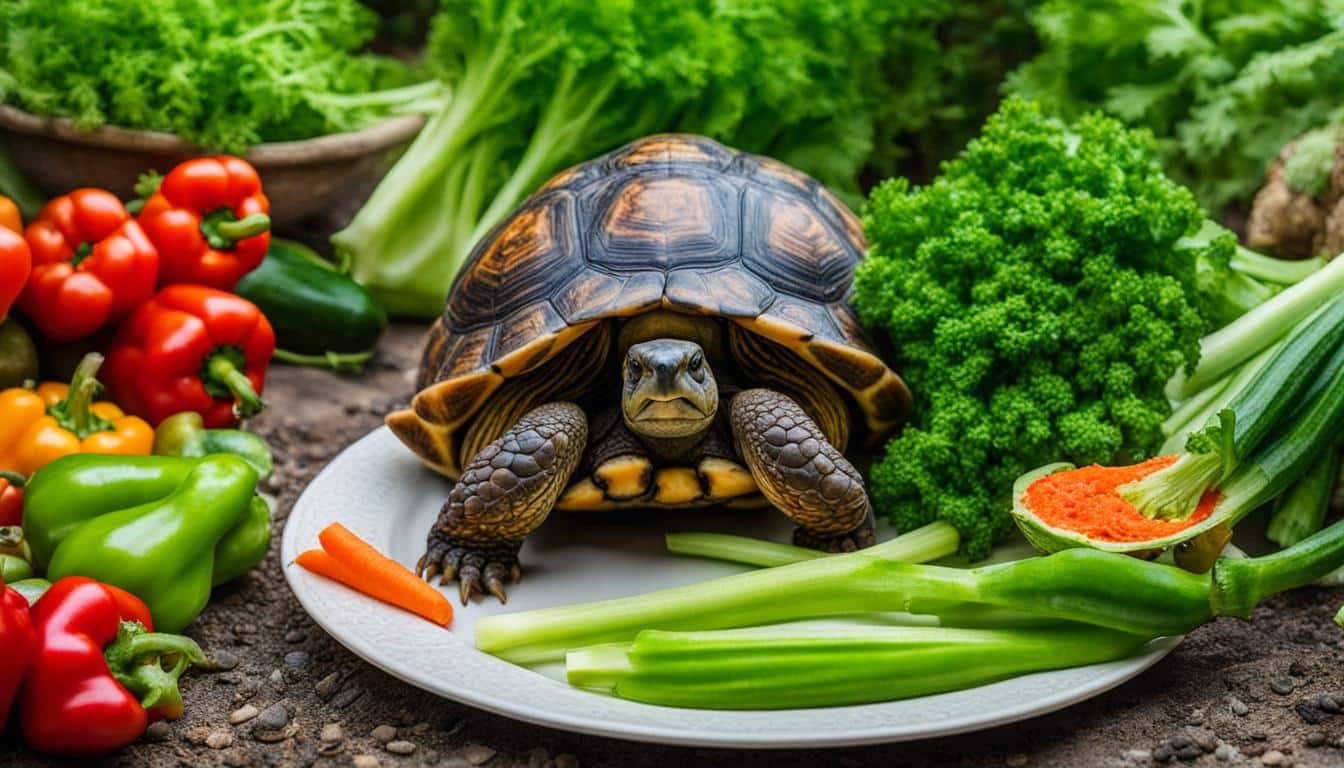
Risks Vs. Benefits: Is Celery a Good Choice for Your Tortoise?
Deciding to feed celery to your tortoise means considering both the good and bad. Celery can offer hydration and vitamins, which are good for them. Its water can keep them hydrated, and its nutrients can add to a balanced diet.
However, it is crucial to consider the risks associated with celery as well. Celery has oxalates, which can be bad for tortoises if they eat too much. Oxalates can mess up calcium absorption. They might cause bladder stones or other health problems.
So, use celery in your tortoise’s diet carefully. Consulting with a veterinarian who specializes in reptile care is highly recommended. They can check what food your tortoise needs. They’ll tell you if celery is okay for your pet. They’ll make sure celery fits into a balanced diet. They consider what your tortoise needs to stay healthy.
Remember, every tortoise is unique, and what works for one may not work for another. Think about the risks and benefits. Get professional advice. This helps you decide if celery is right for your tortoise.
| Risks | Benefits |
|---|---|
| High oxalate contentPotential for bladder stone formationInterference with calcium absorption | Hydration due to high water contentVitamins and minerals for a well-rounded diet |
Diverse Diet Choices for Optimal Tortoise Health
Besides celery, there are lots of other veggies and fruits your tortoise can eat to stay healthy. Giving them a mix of foods helps them get different nutrients. Adding different vegetables and fruits to your tortoise’s diet is beneficial. It helps provide them with a balanced meal.
Selecting safe vegetables and fruits for your tortoise is crucial. Choose options that are suitable for their digestive system. Here are some other veggies and fruits your tortoise can eat:
- Leafy greens such as kale, collard greens, and dandelion greens
- Squashes, including butternut squash and zucchini
- Bell peppers
- Cucumbers
- Carrots
- Strawberries
- Blueberries
Introduce new foods slowly and monitor your tortoise for any negative reactions. Also, offer a variety of vegetables and fruits for a balanced diet rich in vitamins and minerals.
The Role of Commercial Tortoise Food
You can give your tortoise commercial tortoise food. Fresh veggies and fruits are also good options. It adds variety to their diet and ensures they get all the nutrients they need. Commercial tortoise food, such as pellets, can provide additional nutrition and convenience. These pellets are made for tortoises. They help keep your tortoise healthy by meeting their dietary needs.
Choose commercial tortoise food with lots of plant-based ingredients and no harmful additives. Remember, it’s not the only food your tortoise needs; they also need fresh veggies and fruits.
To make sure your tortoise stays healthy, give them lots of different veggies and fruits. You can also use commercial tortoise food to give them all the important nutrients they need.
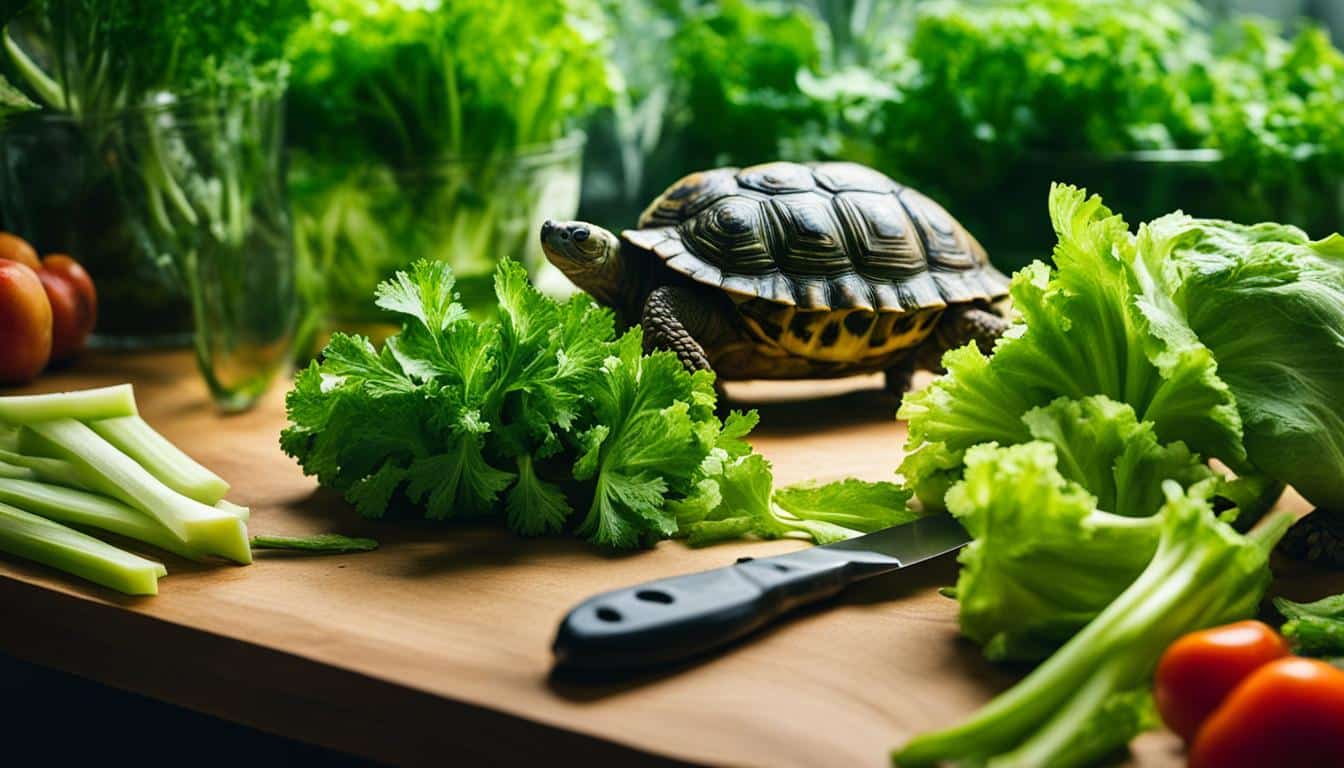
Veterinarian Insights: Expert Opinions on Tortoises Eating Celery
When considering if tortoises should eat celery, ask reptile vets. They know a lot about tortoise diets and health. They can tell you if celery is okay for tortoises and how to give it to them.
“Celery can be good for your tortoise if you give them the right amount. It contains beneficial vitamins and minerals that contribute to overall health,”
– Dr. Samantha Reynolds, a veterinarian specializing in reptile medicine.
“Celery has good nutrients, but it’s watery and has oxalates. Too much celery can give tortoises diarrhea or bladder stones,”
– Dr. Reynolds
“Celery is great for tortoises. It helps them stay hydrated and gives them a crunchy treat to enjoy. This is especially helpful for tortoises with special diets. However, it should be offered as part of a diverse and balanced diet,“
– Dr. Thomas Johnson
Talking to a vet is important for getting personalized advice about your tortoise. Vets understand your tortoise’s special needs and health. They’ll suggest the best foods, like celery, for your tortoise’s meals.
Join the Pet Planet Diaries
Sign up for our newsletter to get the latest tips, stories, and exclusive insights into the wonderful world of pets.
Final Remarks
To sum up, feeding celery to your tortoise can be done safely and in moderation. However, it is crucial to consider certain factors to ensure the well-being of your pet. Check what’s in celery and the risks, like oxalates. Follow safe feeding to give your tortoise a balanced diet.
Consulting with a veterinarian specializing in reptile care is highly recommended. They give expert advice for your tortoise’s diet and health. Vets can tell you if celery is okay for your tortoise and help decide how much and how often to feed it.
Remember to prepare celery properly before feeding it to your tortoise. Wash the celery well to remove dirt and chemicals. Boiling can make it easier to chew and digest. Chop it into small pieces to avoid choking risks.
Take charge of your tortoise’s diet with expert help. Introduce new foods slowly and watch for any bad reactions. This keeps your tortoise healthy and happy.
FREQUENTLY ASKED QUESTIONS
Can a Tortoise Eat Celery?
Yes, tortoises can eat celery, but give it in small amounts and make sure it’s prepared safely for them.
What are the nutritional requirements for tortoises?
Tortoises have specific dietary needs, which vary depending on their species. They may be herbivores or omnivores and need a diet of plants, insects, and calcium sources.
What is the nutritional breakdown of celery?
Celery is low in calories and contains various vitamins and minerals. However, it also has oxalates, which can be bad for tortoises if they eat too much of it. It is also high in water content, which can contribute to hydration for tortoises.
What are the safe feeding practices for tortoises?
When introducing new foods to your tortoise’s diet, do so gradually to avoid digestive issues. Control how much you feed your tortoise and how often to make sure they have a balanced diet.
How should I prepare celery for feeding my tortoise?
Before giving celery to your tortoise, wash it well to get rid of any dirt or chemicals. Boiling the celery can help soften it and make it easier for tortoises to chew and digest. Proper preparation is crucial to reduce the risk of choking.
What are the common health concerns when feeding celery to tortoises?
Choking hazards are a concern when feeding celery to tortoises. It is essential to properly chop the celery to prevent these hazards. Also, some tortoises might be allergic to celery, so watch out for signs of allergies.
Is celery a good choice for tortoises?
Celery can be safely fed to tortoises in moderation. It’s important to consider the risks and benefits. Consult with a veterinarian to address your tortoise’s specific dietary needs.
Besides celery, what vegetables can tortoises eat?
Tortoises can eat various vegetables, besides celery. They enjoy leafy greens like kale and collard greens. Other veggies they like include carrots, bell peppers, and cucumber.
What fruits can tortoises eat?
Tortoises like to eat lots of fruits. These are apples, bananas, berries, melons, mangoes, and others. Remember to offer fruits in moderation as part of a balanced diet. Consult with a veterinarian for personalized dietary advice.
How often do tortoises eat?
Tortoises typically eat daily, but it can vary depending on factors like species, size, and age. Providing a balanced diet and monitoring their appetite is important for their health.
What do veterinarians say about tortoises eating celery?
Reptile experts can tell you if tortoises can eat celery and how to give it to them.
